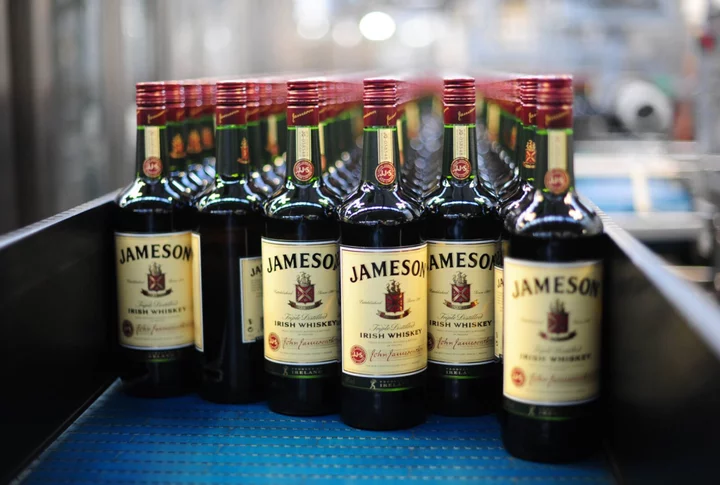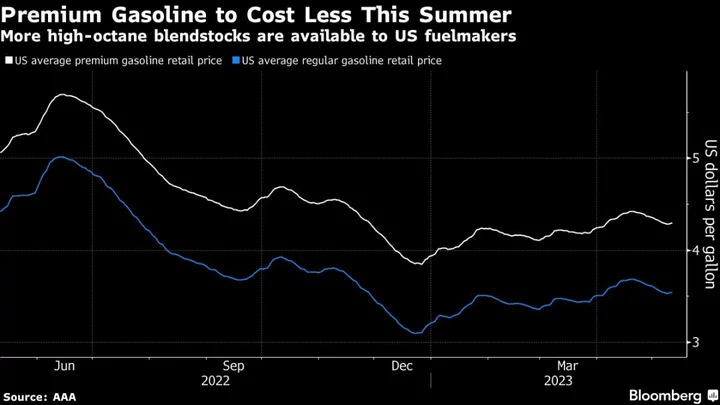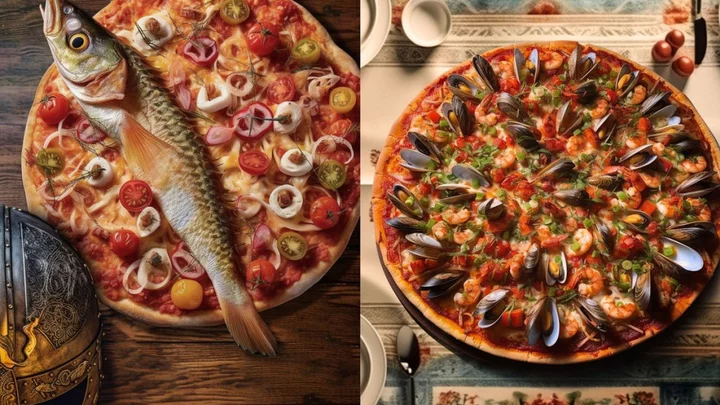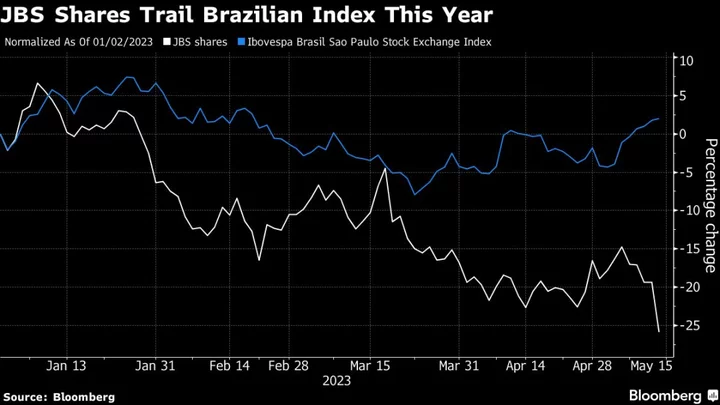
Former Coronation Street star Chris Fountain shares hospital updates after heart surgery for ‘mini-stroke’
Actor Chris Fountain has shared footage from the hospital following his heart surgery. The former Coronation Street and Hollyoaks star was admitted for an operation on his heart, months after suffering a “mini-stroke”. On social media, he updated his followers with posts to his Instagram stories on Friday (12 May). “I’m back, baby,” Fountain, 35, said to the camera while laying in his hospital bed. “Still feeling a little bit woozy, my groin is rather sore. But I’ve finally been allowed to eat and drink, but the cheese sandwich didn’t quite do it.” He added that his mother, who was in the room with him, would be going to find him something more substantial to eat before signing off. Later, he shared a video originally posted by Dutch musical theatre actor Martijn Vogel that explains the procedure that had been performed on him. Fountain’s surgery was to address a patent foramen ovale (PFO), which is described by the NHS as a hole between the left and right atria (upper chambers) of the heart. People with this condition are at a higher risk of stroke. If a PFO does not fix itself, the surgery to treat it consists of inserting a catheter with a closure device through the femoral vein in the leg up to the heart, where the device is left to close up the flap. In a later video, Fountain is seen walking around the hospital. “Back on my feet, they’ve cleared me to walk a little bit,” he said. “What a day! To be honest, I was really quite nervous when I went into the anaesthetist room, it all became very real.” He concluded on a positive note, telling fans that the outlook looks good so far after tests were run to check that the device is “in the right place and working, and not leaking”. The actor starred in more than 300 episodes of the long-running ITV soap, Coronation Street, from 2011 to 2013. He was fired after videos of him rapping about rape were discovered on YouTube. Since then, Fountain has addressed the impact that his firing has had on his life. Read More TikTok Tattoogate: How a tattoo artist sparked backlash for ‘absurd’ pricing and design changes Millie Mackintosh says she was ‘ghosted’ by Meghan Markle after she started dating Prince Harry Elliot Page praised for shirtless photo: ‘It feels so good now’ One in five people may be suffering from ‘dangerous’ sleep disorder Bo Jackson says he will undergo procedure after year-long battle with chronic hiccups As Coronation Street puts the spotlight on sepsis, the signs and symptoms to know
1970-01-01 08:00

Pernod Ricard to Stop Spirit Sales in Russia in New U-Turn
Pernod Ricard has stopped all spirits exports to Russia again and indicated it will cease activities there in
1970-01-01 08:00

Luxury Car Owners in US Can Expect to Pay Less for Premium Gas This Summer
A summer of road trips powered by premium gasoline is about to get more affordable. Gasoline makers in
1970-01-01 08:00

Domino’s and AI create national dish-inspired pizza toppings for Eurovision final
Forget pizza pie…this is pizza AI! Domino’s reveals national dish-inspired pizza toppings for countries competing in the Eurovision final. But they have all been made with artificial intelligence. As the stand-in host nation for war-torn Ukraine, the UK - with Mae Muller singing for glory - has been given a Beef roast dinner speciality pizza. It comes with potatoes on a bed of gravy, covered in horseradish sauce. France has Coq au Vin braised chicken, with diced potatoes and rosemary garnish. Germany’s toppings are Bratwurst sausage loaded over chips, drizzled with ketchup and mayonnaise. There is Carbonara pasta, bordered with pepperoni slices, on a pizza for Italy. Paella with clams and prawns – finished with a sprinkle of spring onions, is dedicated to Spain. Sweden has a fish with sliced tomatoes, chopped radishes and onions topping. Ukraine has a trademark Chicken Kyiv, dressed in lemon and dill. Meanwhile Australia - in Eurovision since 2015 - has Fairy Bread, an old-fashioned Aussie snack made from white bread, butter and ‘hundreds and thousands’ sprinkles. A Domino’s spokesperson said: “With Eurovision being one of the busiest nights of the year for Domino’s, the nation’s favourite pizza brand, has cooked up a treat for the senses. “By challenging AI to imagine what a limited-edition pizza for all the favourite competing countries would look like. “Domino’s set AI system MidJourney to work, curating completely unedited Eurovision-inspired pizza toppings for The Big Five countries and a few other nations. “Passing the reins to AI, pizzas generated varied from a somewhat delicious looking Roast Dinner to Carbonara and a clam and prawn loaded Paella pizza. “Signature dishes were also generated for host nation Ukraine in the form of Chicken Kyiv pizza. “And Australia, to see what the country that has competed in the competition since 2015 – to everyone’s bewilderment – would serve up. “And it’s Fairy Bread pizza. “A country and party staple of bread spread with margarine and covered in hundreds and thousands.” Sam Wilson, AI mastermind at Domino’s said: “Pizza brings everyone together, just like Eurovision. “So we challenged AI to generate the perfect pizza for each nation. It’s no surprise the classic Sunday Roast was Britain’s pizza of choice, but we didn’t expect Fairy Bread for Australia. “We’re rooting for Mae Muller this weekend and look forward to seeing her waving the flag for the UK. “But we won’t be giving AI a role in our kitchen just yet.” The Eurovision contest saw over 161 million people worldwide tune in last year. With an estimated 8.93 million people in the UK watching the finale ceremony in 2022. Have your say in our news democracy. Click the upvote icon at the top of the page to help raise this article through the indy100 rankings.
1970-01-01 08:00

Top Meat Producer JBS Sinks as Loss Shows Diversification Still Has Risks
JBS SA, the world’s largest meat producer, plunged the most in three years as an unexpected loss in
1970-01-01 08:00

Samantha Womack ‘would have delayed’ cancer treatment to strike with NHS staff
Samantha Womack has said she would’ve delayed her own cancer treatment in solidarity with striking NHS staff who “shouldn’t be eating from food banks”. The former EastEnders actor, 50, announced she had been diagnosed with “brutal” breast cancer in August last year – shortly after Dame Olivia Newton-John died from the disease. Last December, NHS doctors and nurses went on a nationwide strike demanding better pay amid a cost-of-living crisis and rising inflation. Describing herself as a “huge advocate” of England’s national health service, she called it “one of the best gifts we have” in an interview with Press Association. She added: “But when you’ve got the people who are working as hard as they are doing the hours they are, not being supported, even if it would have delayed my own personal treatment, “I would have been out there fighting with them, because I’m absolutely desperate for them to be paid properly and appropriately for what they do,” she continued. “They certainly shouldn’t be eating from food banks.” She also told the agency Newton-John’s death made Womack want to share her own diagnosis, “because I thought everyone knows someone that’s got cancer”. “It was very poignant for me when I got my diagnosis that she had lost her battle and they happened within the same timeframe,” she explained. Womack, who played Ronnie Mitchell on the hit BBC soap until 2017, told fans in January 2023 that she had overcome breast cancer. The British actor is now lending her support to a campaign enabling greater access to a new AI breast cancer diagnostic tool called Digistain. The UK’s first breast cancer risk profiling solution, Digistain helps patients better understand their cancer and the specific treatment that will most benefit them. Womack said she didn’t know about Digistain when her cancer was diagnosed, and that she was “anxious not to have chemotherapy” if she didn’t require the “brutal treatment”. “I knew that there was a test called the Oncotype test, which is very similar....(but) it’s incredibly expensive so it’s just not available to most people,” she added. Womack said the test gives a ratio of how beneficial chemotherapy would be and she was “on the fence” so had two rounds before making the decision to stop. Last October, Womack gave fans a health update while receiving the treatment, explaining that she had gotten her appetite back but was struggling with migraines. Elsewhere in the interview on Friday (12 May), Womack reflected on life after being given the all-clear and how it has changed her perspective. “It’s apparent in every little thing that you think,” she continued. “It’s a bit like learning to think and speak in a different language and it’s quite exhausting, because you’re not quite the same person that you were so everything is just slightly shaded in a different colour.” Read More Rainy bike rides and jellybean bribes: The secrets of royal coronation photographer Hugo Burnand Taylor Swift fans react to new photo ‘confirming’ Matty Healy romance: ‘I’m going to cry’ The Bear star Jeremy Allen White’s wife Addison Timlin reportedly files for divorce Meghan is ‘cuckoo’ in royal nest and her ‘woke hang-ups’ will destroy marriage, says Labour grandee Robert De Niro reveals name of newborn daughter as he shares first photo of seventh child
1970-01-01 08:00

Richemont Boss Rupert Quashes Talk of Deals with LVMH or Kering
Johann Rupert, the controlling shareholder of Swiss luxury goods conglomerate Richemont, dismissed talk of a takeover by bigger
1970-01-01 08:00

Cartier Maker Richemont’s Profit Gains as China Rebounds
Richemont, the Swiss luxury goods maker that owns the Cartier brand, reported earnings that beat analysts’ estimates as
1970-01-01 08:00

4 signs you’ve eaten too much salt
Feeling the urge to glug a glass of water shortly after you’ve munched a packet of crisps, bowl of popcorn or handful of peanuts, is a clear sign your snack was on salty side – and that’s not necessarily a bad thing. “Salt is a necessary requirement to eat – and not for flavour,” says Pippa Hill, nutritionist and founder of The Weight Loss Guru. Table salt, aka sodium chloride, contains around 40% sodium, an essential nutrient. “Eaten in a small quantity, sodium helps the conduction of nerve impulses, muscle contraction and relaxation, and helps maintain the balance of water and minerals,” she continues. “A lack of salt can lead to muscle cramps, nausea, fatigue and light-headedness.” However, consuming more than the 6g a day recommended by the NHS for adults – equating to around one teaspoon – can be detrimental for your health. “A high salt intake disrupts the natural sodium balance in the body,” says Olivia Burley, registered associate nutritionist who is currently working on the NHS Diabetes Prevention Programme. This can result in high blood pressure, she explains: “Hypertension is a condition where blood pressure remains elevated over time, which can increase the risk of heart and circulatory diseases.” Unless you keep a very close eye on food labels, it’s not always obvious how much salt you’re eating in a day. “Examples of foods high in salt can be canned fish or poultry, frozen foods such as breaded meats, salted nuts, canned beans, cured meats, soup and sandwiches,” says Hill. And just because you’ve drunk enough water to quench your thirst doesn’t mean you’re negating the effects of too much salt, which is why it’s important to be aware of other health indicators. “If you are experiencing any or all these symptoms, it is always best to seek medical advice,” Burley advises. 1. Headaches The dehydration caused by excess salt intake can lead to severe headaches. “These headaches tend to be more painful than a mild one, giving a throbbing sensation as the blood vessels are being expanded,” Hill says. “They tend to come on between an hour or two after you’ve eaten, as sodium levels rise through the body.” They may come on quicker if you have high blood pressure or suffer from chronic headaches in general, but can often be solved by rehydrating. “As your water levels are imbalanced, by drinking more water you’re able to minimise and get rid of the headache.” 2. Swollen feet and hands Also known as edema, swelling of the fingers, ankles or feet can be a delayed reaction to a spike of sodium. “When too much salt is consumed, the body retains the extra sodium and increases the fluid outside of the cells, Burley explains. “This causes the kidneys to have reduced function, remove less water and therefore increase blood pressure.” Swelling may occur more when sitting down for too long or on long journeys. “This isn’t an instant response after eating, but if in the next 24 hours of having eaten salty foods you notice swelling in these areas, it could be a link,” Hill says. “It’s best to seek medical advice if this is an ongoing occurrence, as it could be a sign of a more serious health concern.” 3. High blood pressure “Salt is the largest cause of high blood pressure,” Hill warns. “Within just 30 minutes, eating excess salt will have a bodily reaction to the blood vessels.” Also called hypertension, if left untreated it can increase your risk of serious problems such as heart attacks and strokes. Hills says: “If after eating a salty diet, your symptoms include blurred vision, chest pain such as a tight feeling, palpitations, shortness of breath or sudden nosebleeds, it could mean you have a raised blood pressure.” Burley adds: “Hypertension can often have no symptoms and the only way to know your blood pressure is to get it monitored using a machine.” 4. Frequent urination “Excessive thirst is a common response to eating salty foods and naturally leads to an increase in fluid consumption, causing excessive urination,” Burley says. By sending the signal that you need to guzzle lots of liquid, the body aims to remove the excess salt build-up. “Although drinking more fluids in response to an increase in salt is one of the main reasons for urine production, it could be a symptom of other conditions like polyuria, therefore medical checks are best.” Read More Charity boss speaks out over ‘traumatic’ encounter with royal aide Ukraine war’s heaviest fight rages in east - follow live Am I just tired or is it ME? Dr Alex George: Five months of sobriety has made a ‘huge difference’ Everything you need to know about Sophie, the new Duchess of Edinburgh
1970-01-01 08:00

Am I just tired or is it ME?
ME, or myalgic encephalomyelitis, is a serious, long-term chronic illness that impacts the sufferer, leaving them often suffering from extreme exhaustion. ME has for a long time been under-researched, but as awareness of the condition grows, more people are coming forward for help. As a grouping of symptoms, instead of a clearly identifiable illness, ME is very hard to diagnose and thus people can suffer for years before getting help for it. Symptoms can include exhaustion, digestive issues, muscle weakness, shortness of breath and irregular heart rate. But how do you know if you are suffering with ME, or are just really exhausted? Overlapping symptoms Covid has made ME more prevalent, but people still find it so difficult to know what may just be tiredness. “It is really difficult to tell the difference. ME and CFS (chronic fatigue syndrome) have a lot of overlap [with tiredness] and there have been a lot of issues with long covid with these long persisting post-viral malaise, where even if people sleep well, they may still feel exhausted,” says GP and men’s health specialist Dr Anand Patel. If you have had covid or another viral illness, this may increase the likelihood of having ME. Get checked out “If you have had persisting symptoms for more than a few weeks or they are really severe, speak to your GP,” says Patel. Particularly if “you are sleeping okay, your diet, caffeine and alcohol intake are okay, but your symptoms are persisting. They may check your thyroid and blood count”, he explains. “A quarter of our appointments these days are classed as ‘tired all the time’. It is very difficult to weed out what is what when ME and CFS are groups of symptoms that are bundled together. It is not necessarily something that will cause medical harm, but will cause really significant symptoms to sufferers,” says Patel. “With ME, you may be so tired you can barely stay awake in the day. We are still in the exploratory stage of what does cause it, but if you have had psychological trauma or illness it is more likely to be ME that has caused these prolonged symptoms. It can be hard to find things during tests and scans, but of course, there are conditions we don’t have tests for or are hard to identify,” he explains. Be clear of your symptoms “It is really difficult to diagnose something if you can’t find it, so a patient needs to explain symptoms and how they are feeling. Many people with it don’t feel seen, and a doctor may be struggling to find a specific answer,” Patel explains. Keeping a diary of symptoms may help to make it clear. Vitamin deficiencies Consider what the other causes may be. “Tiredness could be caused by blood count and anaemia, thyroid function and deficiencies, dietary changes and vitamin deficiencies,” says Patel. “If you have a varied diet, these are unlikely. B12 and folic acid deficiency are common, they make blood make new cells and are important in nerve function. Also, it could be vitamin D deficiency, a lot of people need to take a vitamin D tablet every day in the UK because we don’t get enough sun and slap on factor 50 as soon as it does come out,” Patel says. Read More Charity boss speaks out over ‘traumatic’ encounter with royal aide Ukraine war’s heaviest fight rages in east - follow live Dr Alex George: Five months of sobriety has made a ‘huge difference’ Everything you need to know about Sophie, the new Duchess of Edinburgh Beyonce kicks of Renaissance tour in string of glamorous outfits
1970-01-01 08:00

El Nino May Slash Thai Rice Crop and Spur Inflation Across Asia
Thailand, the world’s second-biggest rice exporter, is asking farmers to grow only one crop this year — instead
1970-01-01 08:00

UK Lawmakers Probe Supermarkets’ Power Amid Soaring Food Prices
UK Members of Parliament are launching an inquiry into the influence of supermarkets and manufacturers on food prices
1970-01-01 08:00
